Sitting below the Mackinac bridge, the proverbial Lower Peninsula troll, Colonial Michilimackinac is an often overlooked attraction. Dating back to 1715, the fortified village is an important location for the history of both Michigan and the Great Lakes. Fifty years of archaeological work have paved the way for a wonderfully detailed reconstruction, which brings to life the settlement for today’s visitors. This is a stop not to be missed on any excursion to the Mackinac area or en route to the Upper Peninsula. Whether you are a history buff or just taking the family on vacation, Colonial Michilimackinac is engaging for all ages and interests.
We had a bit of extra time after arriving late on a Sunday afternoon and discovered Michilimackinac was still open. It was well worth the tour. We spent roughly two hours touring the buildings, talking to docents, and watching musket demonstrations. Most impressive was the historical accuracy of the buildings and how they have been reconstructed on top of the original foundations. In fact, in a few of the buildings visitors can go to the lower level and actually see the original wood still in place from the archaeological digs. It really brings to life the age of this settlement in a state where we rarely see anything left from the 1700s.
There are sixteen buildings surrounded by a tall palisade wall. The fortified settlement has been rebuilt to reflect what it would have looked like in the 1770s. Nearly everything has been reconstructed using period construction techniques, expect for the addition of modern weatherproofing and climate controlled areas to preserve original materials. My copilot on this road trip is an architect and enjoyed looking at all the details. The docents outnumbered visitors this late in the day, which gave the place a feeling of stepping back in time.
We’re both history nuts, so two hours was not nearly enough time to explore. Many signs and displays had to be skipped just to have enough time to get a quick look at every building. On the flip side, even my chronically impatient daughter would take interest in the docents with their period costumes and the musket firing demonstration. Each building is furnished accurately and many have well-done mannequins representing historical figures or tradespeople, which adds an air of life to what could have been the typical dry historical displays often seen in museums. There’s also plenty of room to run around and a playground just outside the walls for kids to release some of that extra energy.
History of the Michilimackinac Settlement
The French originally built a fortified settlement on the south shore of the Straits of Mackinac in 1715. At the time, French voyageurs were active in trading with various Native American tribes around the Great Lakes and Christian missionaries had soon followed. Michilimackinac was a key location for voyageurs returning with furs to send East through Canada and to pick up fresh supplies. The settlement also acted as a trading post and meeting point for interactions with Native American tribes in the region.
By 1761 the British had taken control of the area and settlement, but operations continued relatively the same. That began to change as the American Revolution began and tribes formed alliances with different factions. The British disassembled much of Michilimackinac and relocated to Mackinac Island in 1779. The land became a Michigan State Park in 1909 and archaeological excavations began in 1959. The settlement hes been under research and construction ever since.
What to See at Colonial Michilimackinac
The settlement is fun for all ages and levels of interest. Start in the entry building directly below the Mackinac Bridge. There is free parking located in front and along the road. Inside the building you’ll find some historical displays, a gift shop, and snacks. Tickets can be purchased here or online (see below). Pick up a map and head into the park to explore. Here are some things to do in Michilimackinac:
- Watch the movie in the King’s Storehouse
- Tour all 16 buildings
- Interact with characters in period costumes to learn about life in the 1700s
- Watch a live musket or artillery demonstration
- Explore the lower levels of buildings to see original remains and displays of archaeological finds
- Go on a guided walking tour
- Enjoy a quiet walk along the shoreline with a spectacular view of the bridge from the Lake Michigan side
Colonial Michilimackinac Hours and Tickets
The settlement is open seasonally. Typically the park begins operations just after Memorial Day and closes in early October. Daily hours are 9:00am to 7:00pm in the summer and 9:00am to 5:00pm in the Fall. Last entry is an hour before closing.
Tickets at $12 for adults and $7 for children ages 5-12. Various combination packages are offered, which may be of use to some visitors depending on which attractions are of interest. Visit the Mackinac Parks ticket page for details and current pricing. An annual family membership may also be a money saving option.

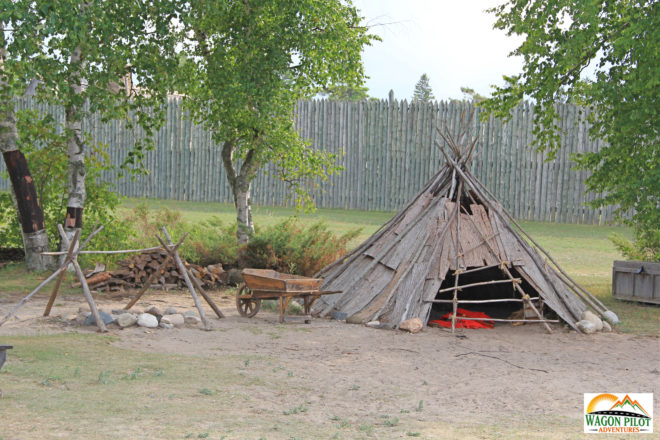
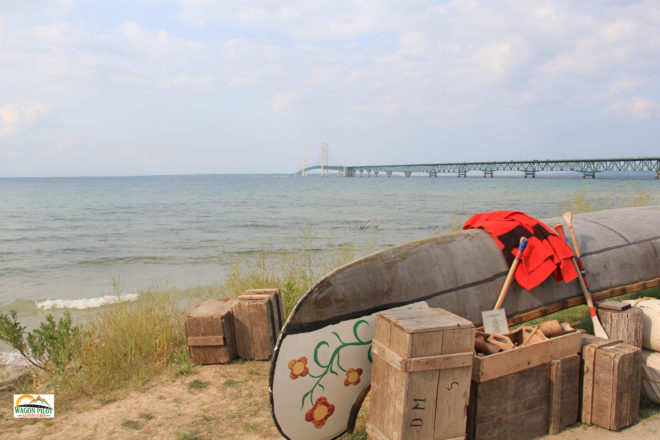
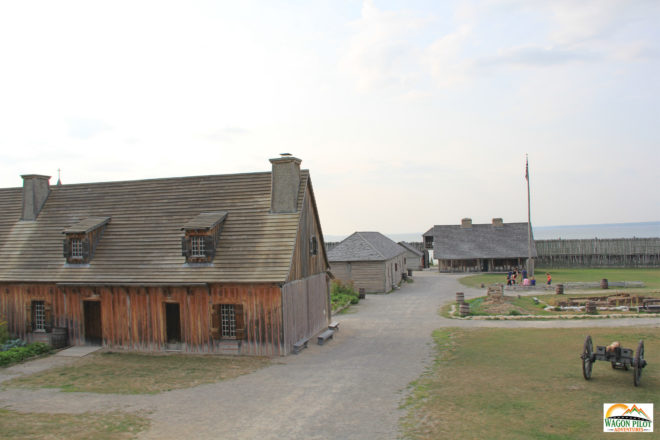
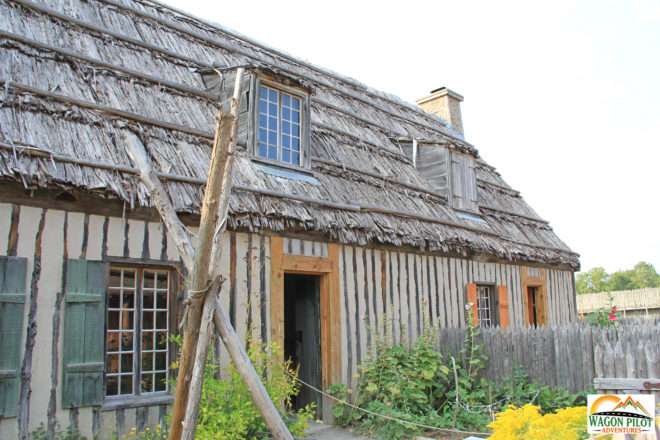
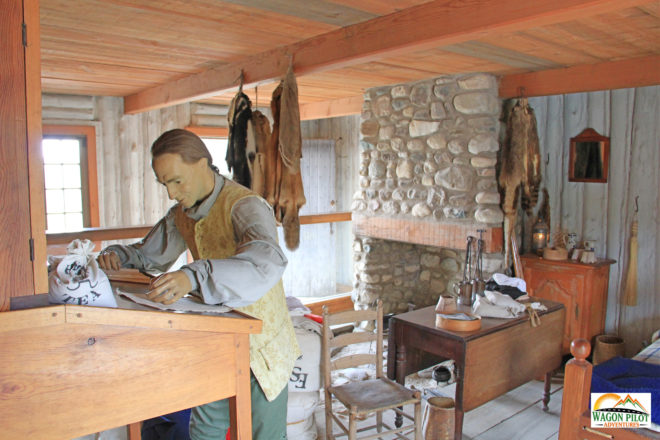
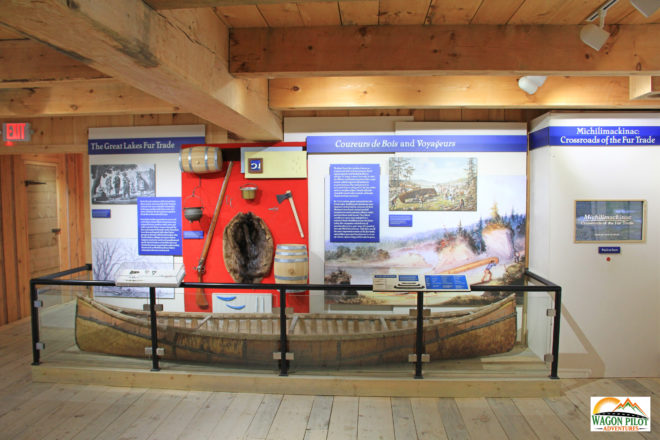
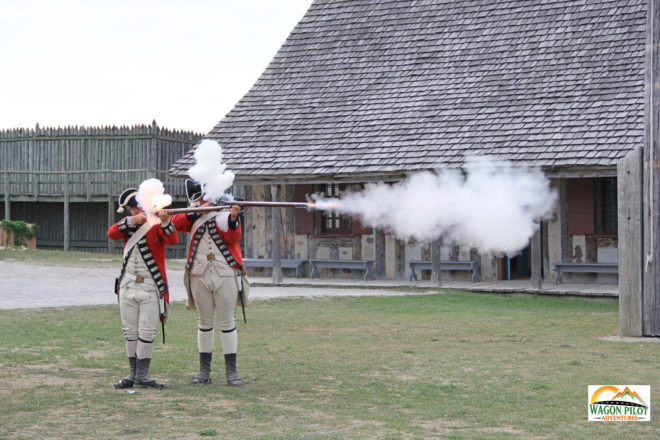
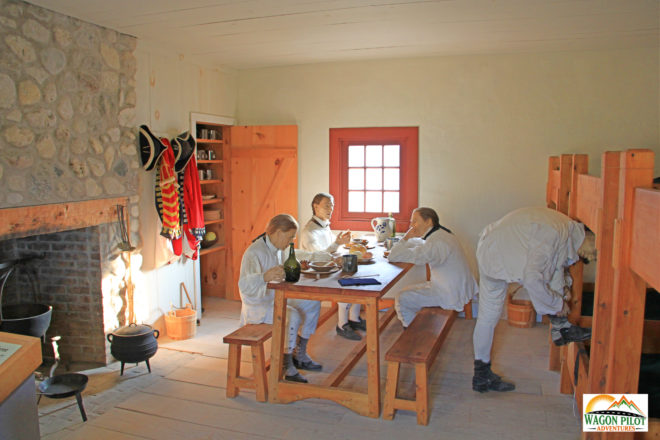


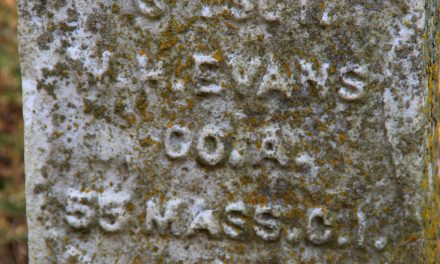

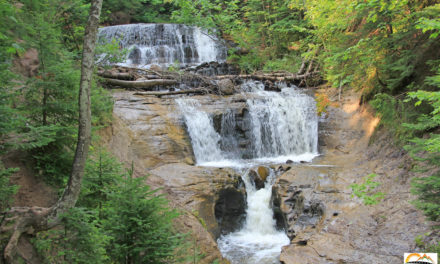
It is well worth the stop next time you are in the area. Very well put together displays.
We were near Michilimackinac during our Michigan road trip this summer. I had hoped we would be able to fit in a visit but it didn’t work out. I hope we get back up there someday soon.